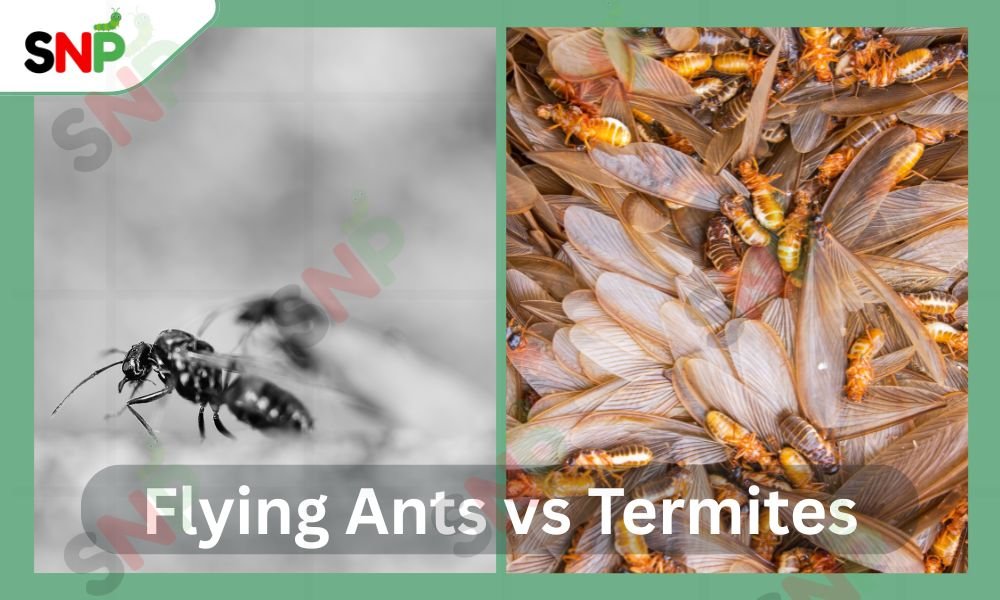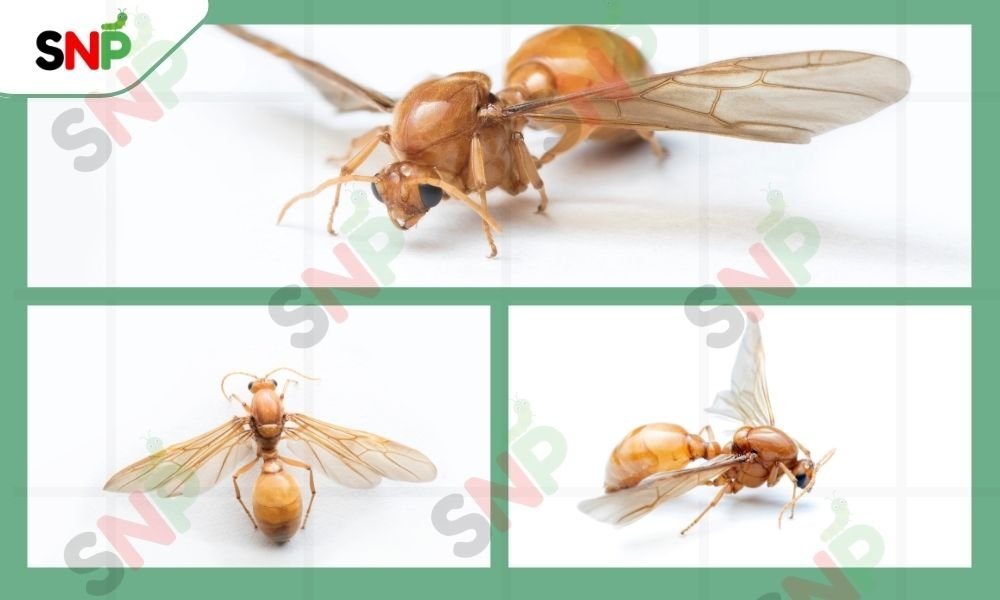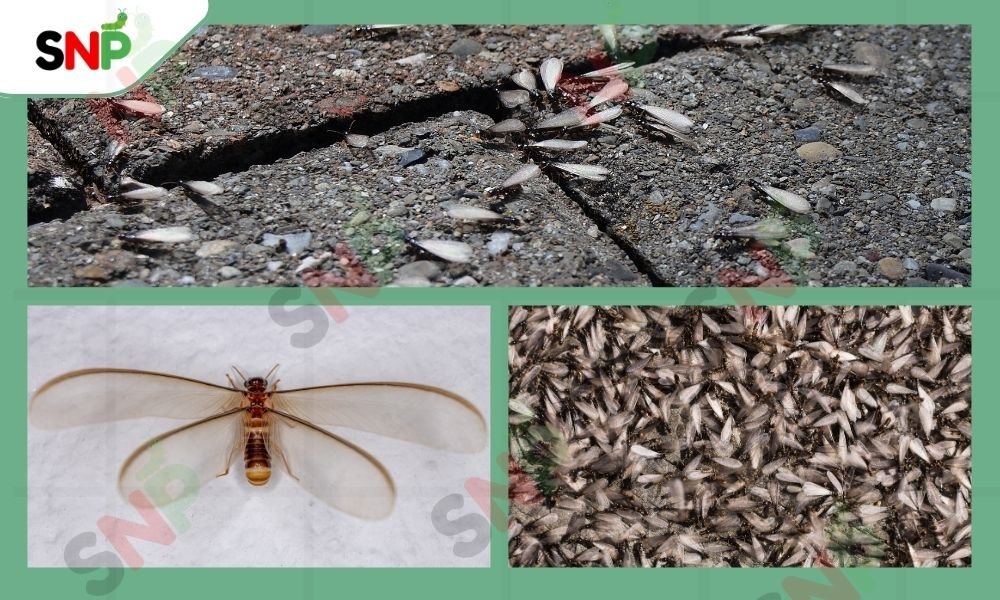Flying Ants vs Termites: How to Identify and Eliminate These Pests

The presence of flying insects indoors is disturbing to householders who must determine between flying ants vs termites infestations. These pests have noticeable differences between them despite their initial visual similarity. Knowledge about the differences between these pests becomes essential because termites inflict serious damage to house structures. At SayNoPest, we provide you with all the authentic information about the Flying ants vs termites and help you to make the right choice for choosing the Pest control professional by comparing their service quality, Best seller service, best feature, and many more.
Physical Differences Between Flying Ants and Termites

When comparing flying ants vs termites with wings, look for these key physical differences:
Body Structure
- Ants: Their body is divided into segmented with a narrow waist, giving them an hourglass look.
- Termites: On the other hand termites have a broad waist with a wider body shape
Antennae
- Ants: They have bent or “elbowed” antennae
- Termites: Termites consist of straight antennae
Wings
Flying ants vs termites wings differ significantly. Ants have two pairs of brownish wings, with the front pair noticeably larger than the hind pair
Termites have two pairs of wings that are equal in length and typically translucent
Color
- Ants: Commonly appear black, brown, or reddish
- Termites: Usually black or dark brown in color
A fly ant bite may cause minor irritation, while termites don’t typically bite humans but destroy wood instead. These wood munchers can cause a heavy loss of property. Identifying whether you’re dealing with flying ants vs termites is the first step toward proper treatment. When you know the correct difference, you can easily kick them out of your house.
Life Cycle of Insects
The development of both ants and termites reflects the variances that constitute the life cycle of an insect.

- Ants: Experience full metamorphosis, which consists of four stages: egg, larva, pupa, and imago.
- Termites: Are in the process of incomplete metamorphosis, in which there are three stages: egg, nymph, and adult – no pupal stage.
Usually, the lifespan of a worker ant is only 6-8 weeks, whereas the termite queen can last up to several decades. After the mating process, male flying ants expire while females lose their wings to start new colonies. In the case of termites, both females and males remain alive after copulation in order to generate new colonies.
What is noteworthy about a termite queen is that she may continue to lay eggs for many years and thus run a colony.
Diet Differences
A look at what these insects eat makes it clear why termites are causing the most damage:
- Ants: Eat a variety of foods. Ants feed primarily on nectar, together with seeds and insects, while they also consume abandoned human food.
- Termites: The diet of termites depends on cellulose, which can be found in wood as well as paper, alongside plants.
The protective nature of flying ants toward their food supply probably explains their attacks because they normally avoid biting humans. The prime concern of a particular group of ants is the selection and inhabitation of a proper place, although these ants do not consume the wood part as their termite counterparts do.
Signs of Infestation
Look for these telltale signs when distinguishing between flying ants vs termites:

Termites:
- Discarded wings in high concentrations
- Mud tubes on exterior walls
- Hollow-sounding wood
- Visible damage to wooden structures
Flying Ants:
- Presence around food sources
- Visible ant trails
- Small piles of wood shavings (for carpenter ants)
- Less likely to discard wings in large numbers
How to Get Rid of Flying Ants vs Termites
There are different methods for Flying ants vs termites control:
Flying Ant Control
- Clean up food spills and crumbs promptly
- Seal entry points around your home
- Use a vacuum to remove visible ants
- Apply appropriate insecticides or bait stations
- Though a fly ant bite seldom causes anything serious, it is better to prevent the infestation to avoid future bites.
Termite Control
- Create a chemical barrier around your property.
- Use termite bait systems to remove the colony, which include the termite queen.
- Consider professional treatment for established infestations
- Remove wood debris near your home’s foundation.
A professional pest control service offers the most efficient solution to differentiate between flying ants vs termites. It particularly stands out in dealing with termite infestations, which present a structural threat to buildings.
Your first line of defence that you should count on would be periodic examinations and precautionary actions, which are the best way to shield you against both ants and termites. If you are well informed about the characteristics of the pests, you can ensure the security of your house and family, and at the same time, you can prevent costly damage.
Related Posts
Fire Ants: Behavior, Habitat, and Impact on Human Health and Environment
Introduction Fire ants are considered as one of the most aggressive and destructive pests in the states of the United States. Their excruciating stings, their destructive nature and the capability to multiply fast makes them a big worry to homeowners, farmers and businesses. The key to effective management of them is first to understand their […]
Carpenter Ant – Wood Nesting Habits and Identification
One of the most common house ants in the United States is called the Carpenter ant, which is in the habit of nesting in wooden buildings. Carpenter ants often confuse them with termites, as their habits and mode of destroying wood are different in many instances. The first step to effective Carpenter Ant control & […]
Argentine Ant – Global Spread and Invasive Behaviour
Among the most constant attackers in the insect world, Argentine ants have earned a well-known reputation. They are very small, yet very effective pests that reproduce quickly, dominate entire ecosystems, and form supercolonies, which repel native ant species. Their performance in the urban and rural settings is one of the reasons why they are a […]
Quick Link
Services
